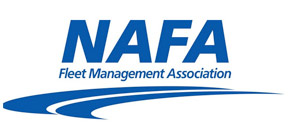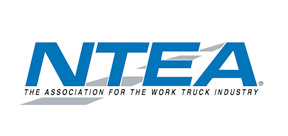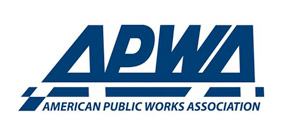Community stakeholders bond together to form U.S. 30 coalition with the focus on safety and economic development

The thought that there’s power in numbers and coming together for a common cause is the idea behind the U.S. 30 coalition.
The coalition of mayors, county commissioners, economic development planners, businesses and other stakeholders along U.S. 30 formed the coalition about 10 years ago with the goal of making U.S. 30 a freeway from Fort Wayne and the Indiana-Ohio line all the way north to Valparaiso.
The coalition includes the counties of Allen, Fulton, Hamilton, Howard, Kosciusko, LaPorte, Marshall, Miami, Porter, Starke, Tipton and Whitley.
The Municipal spoke with two of the stakeholders: Fort Wayne city engineer Shan Gunawardena and Plymouth Mayor Robert Listenberger.
Gunawardena has been involved with the U.S. 30 coalition since its inception and has been with the city of Fort Wayne for 17 and a half years. He said the coalition formed “because U.S. 30 was becoming increasingly congested, and it was creating a lot of safety issues.”
He added, “One thing we heard from economic development folks was that companies like Steel Dynamics and Amazon wanted to locate there, but it was becoming too congested to be an economic development corridor. They want to be located within five minutes of a freeway and U.S. 30 is not a freeway. At that point, the coalition came together and adopted the vision to make U.S. 30 a freeway from the Indiana-Ohio line to Valparaiso, and we’ve been advocating for that ever since.”
He noted Valparaiso was “close to being a freeway” up to I-65, but coalition members want that all the way. He clarified that a freeway is four lanes — two in each direction — and the only way on or off is through interchanges like I-69. This is similar to an interstate, but the U.S. 30 corridor wouldn’t be labeled an interstate — it would be a freeway with uninterrupted driving.
When asked about Fort Wayne’s challenges, he mentioned the absence of interchanges within city boundaries, concluding, “Fort Wayne would benefit a lot from the project.”

The project’s intent is economic development, and recently, Steel Dynamics has announced a major property expansion, so it is going to fund an interchange at CR 700 E in Whitley County. It also wants to expand further into Allen County and has proposed an interchange at Flaugh Road, where Amazon is located. That is currently in the design phase and will go out to bid early next year.
According to Gunawardena, the proposal covers some areas; however, officials wish to expand the interchange access only to encompass the region from the Allen County line to Valparaiso and from I-469E to the Ohio state line.
Gunawardena said the U.S. 30 coalition wants the Indiana Department of Transportation to take the initiative in developing the freeway, and the first step in a major project like this is an environmental impact study. He said INDOT decided in lieu of an environmental impact study, to do a Planning and Environmental Linkage study.
Gunawardena said the PEL study “doesn’t quite address all the environmental issues,” but it solicits input from all the stakeholders. The first draft looked at every possibility, the second draft narrowed it down and the most recent draft — Level III — narrowed it down to three alternatives: an expressway, expressway light and the third a freeway. The deadline for stakeholders to respond to the Level III report was Dec. 13.
“We’re hoping to see only freeway coming out of the recommendations,” he said.
However, he pointed out that there is going to be a change in administration at the state level. “So, it will be a matter of priority — how high the state legislature prioritizes the project.”
When it comes to support from the legislature to date, Gunawardena said, “We believe all the northern legislatures are on board — I don’t know of anyone who is not willing to sign on. There’s no shortage of support from the legislatures, no shortage of support of economic developers, no shortage of support from municipalities — it’s just a matter of what the priorities are at the state budget.”
The biggest benefit to Fort Wayne and really all those along the route is safety improvements. He said, “There are a lot of accidents along the U.S. 30 corridor, and a lot are created because of traffic signals and speed differentials.”
There’s a lot of truck traffic from companies like Steel Dynamics and Amazon — all doing interstate commerce — and they have stop-and-go traffic through the small communities like Columbia City and Warsaw and rural areas in the counties, potentially increasing the number of accidents.
As does the traffic on side streets crossing U.S. 30 — so accidents from those causes will be significantly reduced.
Plymouth, Ind.

The city of Plymouth Mayor Robert Listenberger just took office Jan. 1, but he was aware of and was supportive of the U.S. 30 coalition prior to becoming mayor.
“We belong to both U.S. 30 and 31 coalitions,” he said. “And we contribute financially annually to U.S. 30.”
The coalition members meet monthly via Zoom. Listenberger shared his response to the Level III report and pointed out some “opportunities I think they missed.”
He said overall, the city of Plymouth supports the project because it will “create a safer travel network for goods and people.”
The project will have a major impact on the east side of the city, specifically. In his response to the Level III study, he made a few suggestions. The city currently has access points for businesses, farmers and residents, and those are broken down into four planning segments — 8, 9, 14 and 15. These access points run from east of Queen Road to east of King Road and from south of 13th Road to the U.S. 30 and 31 interchange.
He wrote, “At a critical nexus of U.S. highways in North Central Indiana, the final recommendations from this PEL study have tremendous opportunity for development and commerce in Indiana, making sure that the proper plans are in place to promote these future projects is of the highest importance.”
He broke down the PEL study’s suggestions by planning segments, and for planning segment 8, the freeway package proposal “is roughly identical to what was locally proposed within the Marshall County 30/31 plan with new bridges at Oak Road and Plymouth-Goshen Trail,” the dispersion of Oak Traffic traveling east or west to the associated interchanges. The new interchange at or near Pioneer Road will provide long-term connectivity to western Plymouth, but Listenberger feels a discussion about the future of frontage/access roads is needed because making improvements “in a vacuum will lead to multiple negative impacts to the local infrastructure.”
For planning segment 9, he said all packages promote a safer connection than what is currently available, but “there is a desire to retain a level of connectivity between King Road and U.S. 30 and a limitation on this mobility will only short-change the future development of Plymouth.”
For planning segment 14, which is the city’s far southside entrance and the historic Michigan Road Byway, he stated the packages presented “fall apart in meeting the benchmark of promoting mobility, equitability and local access.” He suggested that the county 30/31 plan is a more comprehensive solution for the 12th and 13th road intersections. This plan includes closing the intersection at 12th Road, creating an interchange at 13th Road and establishing a bridge at 12B Road that ties into a frontage road connecting all pieces together.
He admitted that solution comes with a price tag, but said it promotes generational connectivity and investment between Plymouth, Argos, Bourbon and Knox.
His response stated that planning segment 15 was the segment the city earmarked “of greatest interest.” He suggested there’s a “missed opportunity” of not advancing the connectivity of the historic Lincoln Highway from a bridge into an interchange. He said not having the interchange “will lead to the significant infrastructure and investment being reallocated along with adjustments to future land uses being cut off from U.S. 30 and U.S. 31.”
Of the 15 planning segments, nine are associated with Marshall County and four directly impact the development of Plymouth’s future.
“Being the nexus of U.S. 30 and U.S. 31, the impact of the U.S. 30 west ProPEL study will have significant economic impact on the city of Plymouth not only for the transportation industry, but also in the agricultural industry that Indiana and Marshall County are so ingrained within. Many of the intersections/planning segments have improvements that will benefit the Indiana economy, but the safety and mobility improvements also need to benefit existing and future businesses and families.”
Listenberger’s concluding statement to INDOT’s Level III statement read, “We support (in whole or in part) many of the recommendations or carry forward packages within the U.S. 30 West ProPEL Level 3 Study, but with the amendments including an interchange U.S. 31 at Lincoln Highway and joint interchange improvement in the Michigan Road region.”
He told The Municipalit’s a “juggle between safety and local access,” and officials have to keep in mind the smaller communities south of Plymouth like Bourbon, Argos, Knox and Culver and the residents who shop and work in Plymouth, as well as agricultural businesses that have to get equipment across.
He added that the “coalition is a good group of people” and the project is “of high importance to our community and to me as mayor.”
Back in Fort Wayne, Gunawardena noted another benefit for all: “Making U.S. 30 a freeway will lessen the distance to Chicago, too. From Fort Wayne to Chicago is 130 miles and should take two and a half hours, and we can’t get to Chicago in two and a half hours now, so it will bring Fort Wayne closer to Chicago. The same with Lake Michigan — it’s two and a half to three and a half hours, and the freeway will significantly reduce that. All these things have significant economic development impacts for the city of Fort Wayne.”
Next Article: A vision for modern transit: Rhode Island’s new transit center

